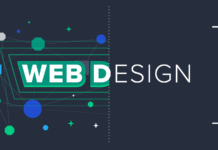Full-stack development is an extensive word that umbrellas various ranges of software development consisting of ‘project management, front-cease in addition to lower back-give up technologies, database control device, and quality guarantee. Front-quit technologies are the outer covers through which you interact. At the same time, the returned-end is a server-aspect technology that (the person cannot see within the browser) handles the person authentication, database interactions, logics, server authentication, to name a few. Digging deep, permit’s distill down and understand the front-quit and again-stop technology on the layers of the form of programming languages/frameworks worried in it.
1. Technologies Encapsulating The Front-give up
The most commonly used front-stop technologies are:
– HTML/CSS
HTML is the foundation of any internet site improvement procedure. It’s the building block that turns the text into pictures, tables, and hyperlinks. The present-day version of HTML is HTML5.
– JavaScript
A scripting language is used to beautify the appearance and experience of HTML pages via infusing wealth and interactive consequences. It is usually discovered embedded in HTML code.
– AngularJS
It is a JavaScript-primarily based open-source structural framework constructed for dynamic internet apps, beautiful web interfaces, and large-scale/ high-performance programs.

– Node.JS
Node JS is an open-supply, server-aspect platform wrapped across the JavaScript language for building scalable, event-driven packages.
– ReactJS
It is a short and bendy javascript library maintained with the aid of Facebook and Instagram that allows us to construct dynamic user experiences efficaciously.
– VBScript
Visual Basic Script is a part-based scripting language evolved through Microsoft. It enhances wen functionality with light-weight speed.
– JQuery
jQuery is a concise and fast JavaScript library that simplifies the HTML’s customer-side scripting. It may simplify occasion dealing with HTML file traversing, Ajax interactions, and animation for fast website improvement.
– Bootstrap
Bootstrap carries HTML- and CSS-based layout templates for typography, bureaucracy, buttons, navigation, and other interface components, in addition to elective JavaScript extensions. Other than this, there are different front-stop technologies like Ember JS and Material UI as well.
2. Technologies behind Back-End
As discussed within the establishing paragraph, again-end or server-aspect technology are accountable for how the site works updates and adjustments. The maximum hard-hitting lower back-end programming languages are:
– PHP
Counted because the maximum popular language for net improvement, PHP’s syntax is quite just like C and Java. The traditional and famous frameworks for PHP are Zend Framework and Symfony.
– PYTHON
Probably, a simpler syntax than PHP, Python is designed to have readable code and is properly tested. The maximum popular framework for Python is Django.
– Ruby
Designed to be a laugh language, Ruby is frequently called a programmer’s best pal. Twitter has become built by the use of Ruby. The most famous framework for Ruby is ‘Ruby on Rails’.
– Scala
Designed to be concise, a lot of Scala’s design decisions aim to deal with Java’s criticisms. Scala is item-orientated and runs on the Java platform.






